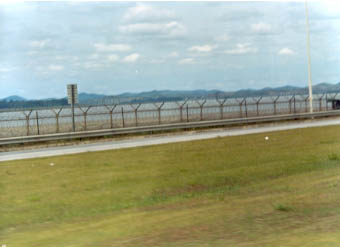

On my way from Seoul to Panmunjom. On the other side of the barbed wire is the Han River and further the North Korea. The high way is heavily guarded by these high voltage barbed wires. Many North Koreans, some of them are spies, tried to cross the river to the Southern side of the river.
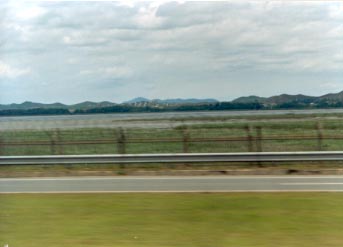
Another look at the barbed wire high way system.
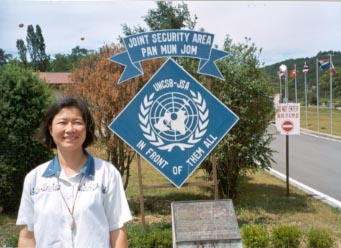
We are at the antrance of the Joint Security Area, the official name for Panmunjom.
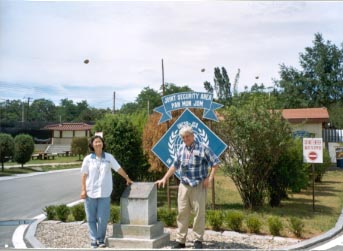
I am with Sandy at Panmunjom.
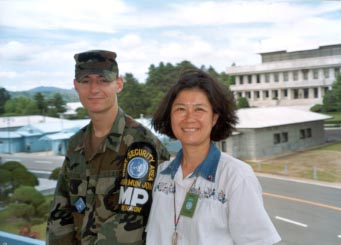
Private Wilson was our security escort during the tour in Panmunjom.
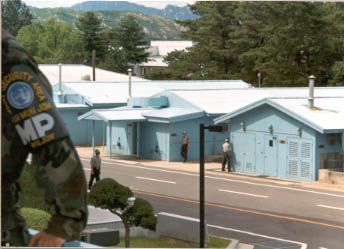
Standing on the tower on the southern side looking into the landmark
of the demarcation line. The ROK military police stand in guard on
the southern side of the building.
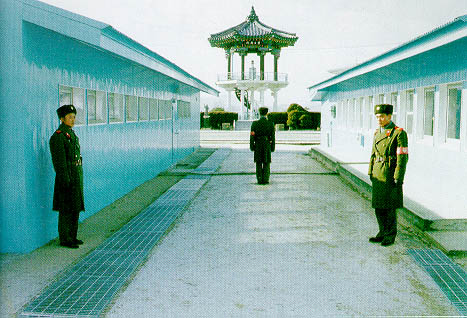
North Korean guards on the northern side of the demarcation line.
Tourists from the southern side can climb to look into the north on the
tower in the center ahead in this picture.
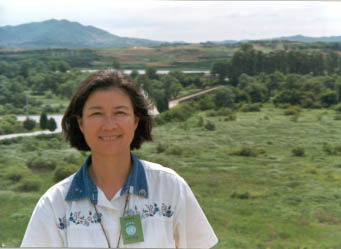
The bridge behind me is known as "the bridge of no return."
During both Operation Little Switch and Operatiojn Big Switch, the UNC
POWs were returned crossing this bridge back to the southern side of the
demarcation line.
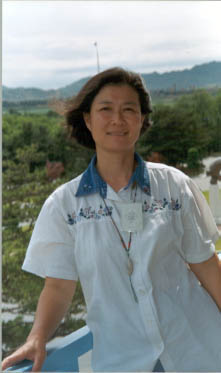
Behind me is the northern side of the demarcation line. The North
Koreans erected their flag poll a few inches higher than the one on the
souhtern side. They like to have anything bigger or taller on their
side than those of the southern side.
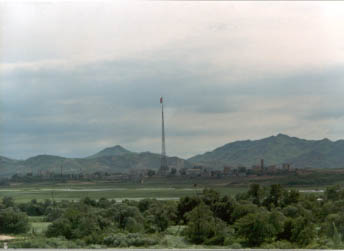
Looking into North Korea from southern side of Panmunjom watch tower.
At foot of the North Korean flag tower lies a fake village. Houses
and buildings appear to be bigger. But you don't see any human movement
in the village over there at any time. The North Koreans are trying
to compare to the real village on the southern side to show they als ohave
people living near the demarcation line area. The village on the
southern side of the DMZ is known as "Freedom Vilalge." Farmers living
there get tax exempted. They, however, have to live a life with many
restrictions, such as back in their houses by 6pm every day, getting permits
in and out of the restricted area, etc. Life goes on along the demarcation
line, although war seems to have never left this gracious "land of morning
calm."
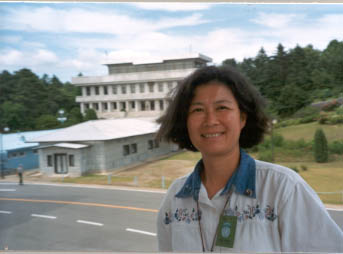
Behind me is the North Korean watch tower on the northern side of the
DMZ line limit.
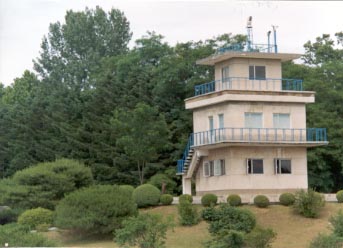
Another North Korean watch tower, right on the side of the demarcation
line. A North Korean soldier is walking toward the tower. One
can almost feel the breath of the North Koreans in this area by standing
within just a few feet away from the other side.
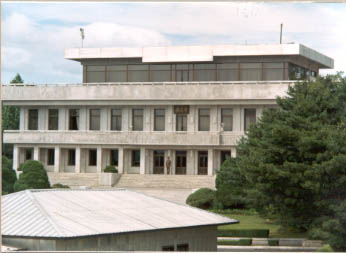
The North Korean main building at Panmunjom on the northern side of
the demarcation line. Notice there is not one on top of the building
at this time just as we climbed the tower in the southern side to look
into north. As soon as the Norht Korean guard saw movement of tourists
on the southern side, they assumed the attention position. Before
that, the guy was in a rather relaxed position.
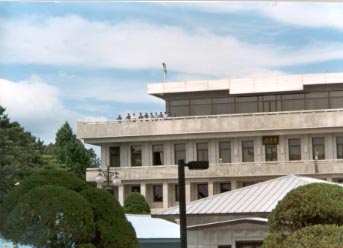
In another minute, a group of North Korean emerged on top of the building,
pretending to looking into the southern side. We were told they have
been doing this every for probably as long as there visitors on the southern
side. They are professional "visitors," probably paid by the government.
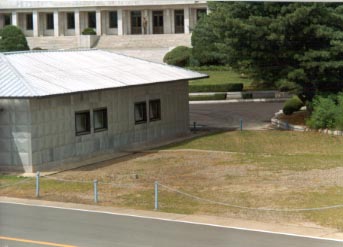
The demarcation line cuts this building by half in the middle.
The ROK soldiers, however, guard the north side of the gate inside the
building.
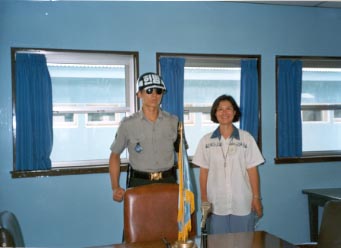
Inside the building. One ROK soldier stands right in the middle
of the room in this gesture for only 20 minutes before they switch guard.
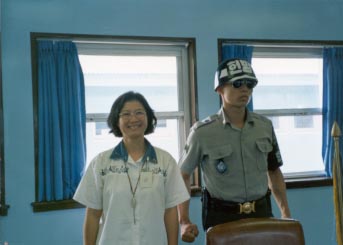
Another look at the ROk soldier on guard. We were told that the
ROK soldiers stand in this gensture becaue it tends to be more threatening
and easy to respond when they have to.
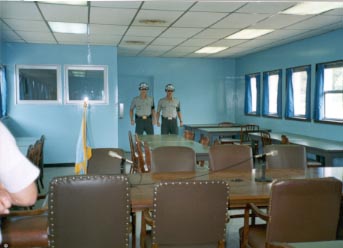
Two ROK soldiers guard the door that leads to the northern side of the demarcation line. In fact, the accurate line that separates north and south lies in the middle of this desk.
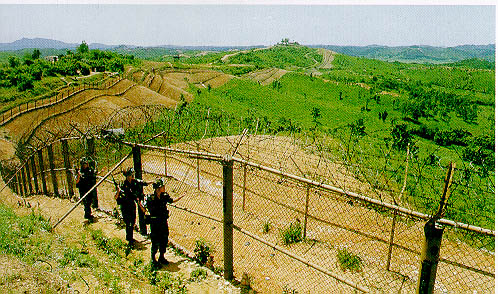
Reportedly, more than one million men of both the US soldiers of the
2nd Division and ROK soldiers are guarding the cease-fire along the demarcation
line. Here shows the ROK soldiers patrolling along the barbed wires
on the southern side of the DMZ.
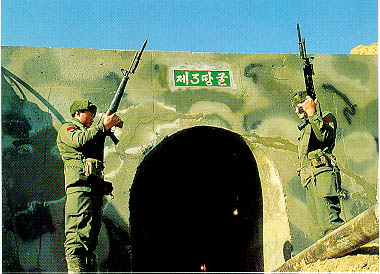
The Third Infiltration Tunnel, one of the 4 tunnels discovered so far
along the DMZ area. The North Koreans dug tunnels such as this one
for preparation of attacking the South. It is less than
an hour from the DMZ area to Seoul. This tunnel is 70 meters
deep from the ground surface, about 2 meter high and wide, 1.5 kilometers
long, extending 435 meters underground south of the DMZ into South Korea.
In the event of military operation, the tunnel is capable of allowing movement
of one division and its equipments to go through from northern side to
southern side in an hour.
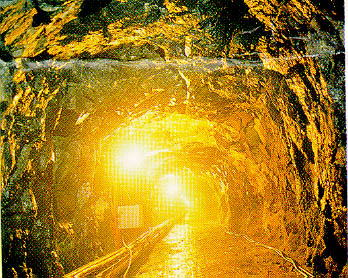
Inside of the Third Infiltration Tunnel. Tourists can take the
steep rubber pavement to go into the tunnel. Cenment structure now
has blocked the joint point where north and south meets underground.
ROK soldiers stand guard underground. Each shift is 4 hours.
It took us about an hour to go down and come up.
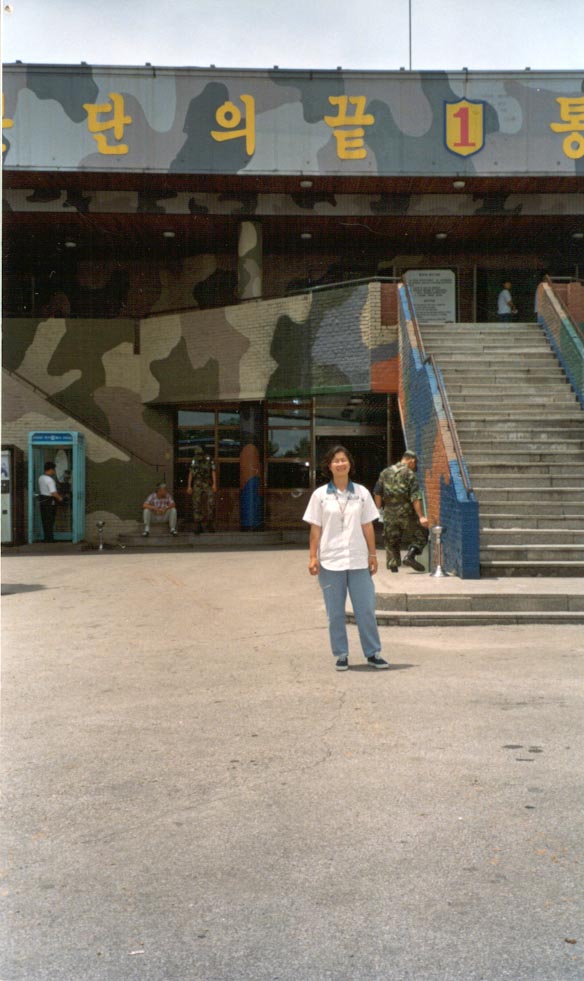
At the netrance of one of several observation tower. Tourists can get information given by ROK soldiers and look into North Korean side from the tower. All the ROK soldiers serving in the joint security area have to pass English exam and they speak close to perfect English (many with no accent). I talked to a couple of them and learned that some of the ROK soldiers were born and have college degree in the US. As they still want to keep their South Korean citizenship, so they went back to fulfill their military service.